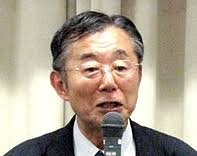shijitu「史実を世界に発信」
【概説】「史実を世界に発信する会」 茂木弘道
『大東亜戦争への道』(展転社)
中村 粲
その21 第六章 米国の報復—ワシントン会議 第1節 ワシントン会議の背景
4年4か月に及んだ第一次大戦は1918年11月11日休戦条約が調印され、1919年1月からパリ講和会議が開かれました。日本は英米仏伊とともに5大国の一員としてこれに参加しました。
日本は講和会議に(1)山東省の旧ドイツ権益継承問題、(2)赤道以北の旧ドイツ領諸島処分問題、(3)人種平等問題の3つの主たる要求をもって臨みました。
(1)は、中国の主張は通らず、ドイツ権益の日本移譲は条約の明文として承認されました。(2)は、日本の委任統治領として承認されました。(3)は白人諸国の強硬な反対にあいましが、委員会17票中11の賛成を得ました。しかし、委員長のアメリカ大統領ウィルソンは全会一致を主張してこれを葬り去りました。もしこれが通っていたなら、5年後にアメリカで排日移民法が成立するような事態にはならなかったと考えられますので、日米紛争の大きな火種の一つは消えていたはずです。残念なことでした。
中国では山東省のドイツ権益を継承し、在満特殊権益は石井・ランシング協定でアメリカの承認を得、太平洋方面では旧ドイツ領諸島委任統治するということで、日本は大飛躍を遂げることになったわけです。
第一次大戦後、ドイツは極東と太平洋から敗退し、ロシアは革命に続く内乱によって余力なく、フランスはインドシナを領有し、支那に租借地を存続してはいたもののその勢力は著しく低下していました。一人アメリカは大戦以来、世界の債権国として実力を示すに至り、又ヴェルサイユ条約を拒否してその関心を欧州から再び極東に転ずるに及んで、ここに日本と正面から対抗する事態が現出したのでした。
アメリカが日本に報復する機会は、パリ講和会議から2年有余の後、ワシントン会議という形で出現しました。日米対立関係の背景に3つの要素が考えられます。
<日英同盟の問題>アメリカは、独露の脅威が消滅した状況下では、日英同盟はアメリカを仮想敵国とする他存続の理由がないからと廃棄を望みました。それより、日英同盟が中国における日本の自由行動を許しているという理由の方が大きかったでしょう。
<極東・太平洋問題>石井・ランシング協定は日本を一時的に懐柔しようというものであったので、大戦が終わるとこれを廃棄しようとします。それどころか、シベリア共同出兵の時には、門戸開放を沿海州にまで拡大しようという主張をします。
<建艦競争>アメリカは第一次大戦中の1916年百五十余隻建艦の3か年計画を決定し、これに対抗して1920年日本は88艦隊計画を立てざるを得なくなりました。日米の建艦競争で、金力を別にすれば、ドック、港湾の設備並びに造船技術の上から見て、日本は明白にアメリカを凌駕していました。またイギリスの海軍拡張を促すことにもなり、ここに3大海軍国の建艦競争とこれに伴う緊迫感とは世界政治の重大事実となったばかりか、当該国にとって財政負担も容易ならぬものになったのでした。
・その21,第6章1節 日本語原文:http://hassin.org/01/wp-content/uploads/Road21.pdf
・ 〃 第6章1節 英訳文:http://www.sdh-fact.com/CL/Road21E.pdf
令和5年11月2日
「史実を世界に発信する会」 会長 茂木弘道
協力者代表:神奈川大学教授 小山和伸
*拡散大歓迎
THE ROAD TO THE GREATER EAST ASIAN WAR
Nakamura Akira, Dokkyo University Professor Emeritus
(English Translation: Society for the Dissemination of Historical Fact)
Part 21, Chapter 6: US Retaliation: Washington Naval Conference-1
The Armistice of November 11 was signed in 1918, bringing the European war, which had persisted for four years and four months, to an end. As one of the five powers, Japan participated in the peace conference that commenced in January 1919, along with Britain, the US, France, and Italy.
Japan’s agenda for the conference included three main items: (1) continued control of former German interests in Shandong province, (2) conveyance to Japan of former German possessions north of the equator in the Pacific, and (3) a proposal for the abolition of racial discrimination.
As to (1), China’s demands for the return of Shandong were rejected; the transfer of German interests in Shandong to Japan was recognized in Article 156-58 of the Treaty of Versailles. Japan’s request for conveyance of former German possessions in the South Pacific was easily approved. Though the Japanese proposal for racial equality met with unyielding intransigence from the “white” nations, 11 of the 17 League of Nations Commission delegates voted in favor of it. However, Woodrow Wilson, the Commission’s chairman, ruled against its adoption, insisting that the vote be unanimous. If it had been adopted in 1919, the Immigration Act of 1924 would surely not have come into being, and one of the causes of conflict between Japan and the US might have been eliminated.
Japan took over German interests in Shandong, China, and German possessions in the Pacific. The Lansing-Ishii Agreement, signed in 1917, won American recognition for Japanese special interests in Manchuria. Japan’s influence in the Pacific region was significantly strengthened.
After World War I, Germany no longer had a Far Eastern or Pacific presence. The Russians needed to concern themselves with the civil war that followed the revolution. Although France had colonized Indochina and retained concessions in China, French influence in the region decreased pronouncedly. However, since the war, the US had demonstrated its strength by becoming the world’s creditor nation. It refused to sign the Treaty of Versailles, having shifted its focus from Europe to the Far East. It was at that point, after Japan had acquired more power in the Pacific region, that the US began to confront Japan head on.
The opportunity for the US to retaliate against Japan did not arrive for about two more years. The stage this time was the Washington Naval Conference, held in Washington, D.C. between November 1921 and February 1922. There were three major items to be discussed.
Anglo-Japanese Alliance
Given that threats from Russia and Germany had vanished, the US wanted the alliance discarded, since keeping it might place the US in the position of a hypothetical enemy nation. Also, if it continued to exist, Japan would have free rein in China.
Problems in the Far East and Pacific
The Lansing-Ishii Agreement was essentially an improvised affair intended to appease Japan for the duration of the war. When the conflict came to an end, the US attempted to dispose of it. Moreover, during the Siberian Intervention the US attempted to broaden the Open Door policy to include Maritime province.
Naval arms race
In August 1916 the US decided upon a three-year project involving the construction of more than 150 ships, aiming to build a navy second to none. Japan responded by coming up with a plan for an Eight-Eight Fleet in 1920. When we look at the naval construction race between Japan and the US, not in terms of monetary strength, but from the standpoint of facilities (docks and harbors) and shipbuilding expertise, we see Japan clearly had the advantage over the US. Moreover, the American naval program stimulated British naval construction, too. Not only did the naval arms race among three great naval powers and concomitant sense of urgency become important facets of world politics, but also imposed a crushing financial burden on the nations involved.
URL: https://www.sdh-fact.com/book-article/2141/
PDF: http://www.sdh-fact.com/CL/Road21E.pdf
MOTEKI Hiromichi, Chairman
Society for the Dissemination of Historical Fact
Phone: 81-3-3519-4366
Fax: 81-3-3519-4267
Email: moteki-sdh-fact.com
URL: http//www.sdh-fact.com
Note: Japanese names are rendered surname first in accordance with Japanese custom.

